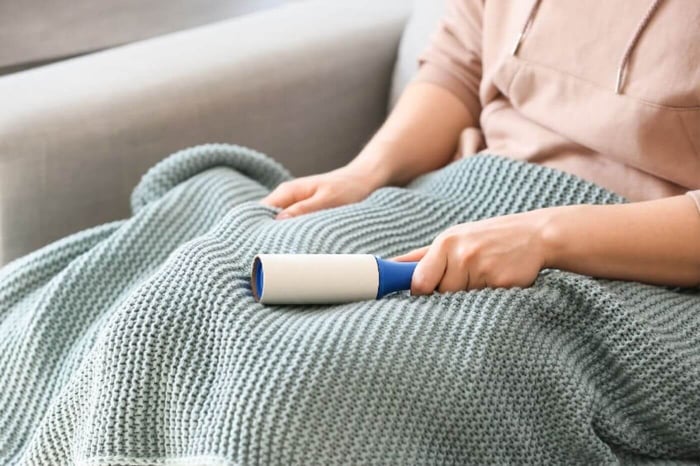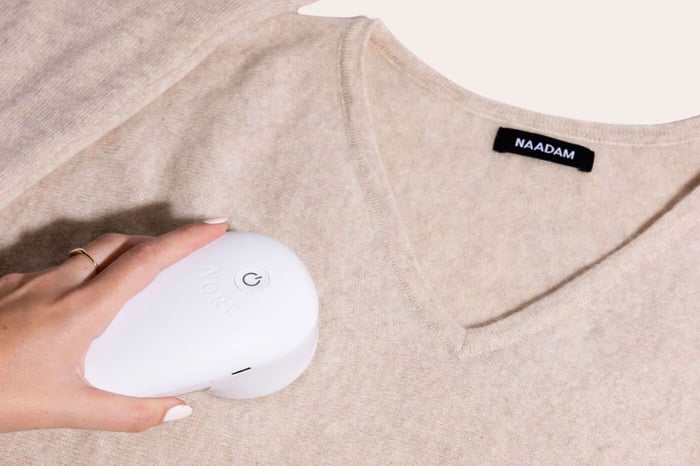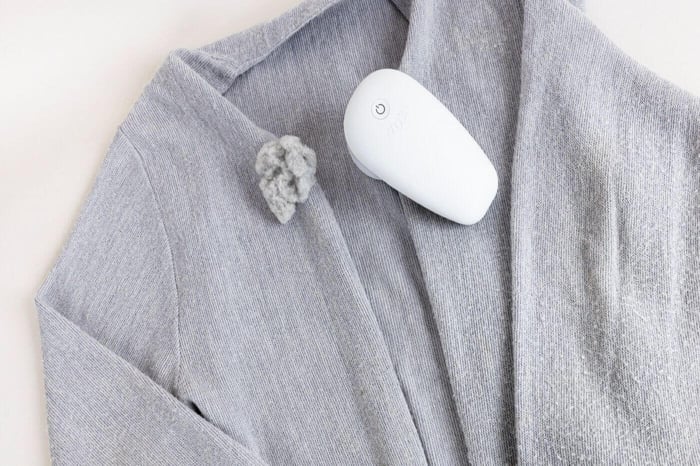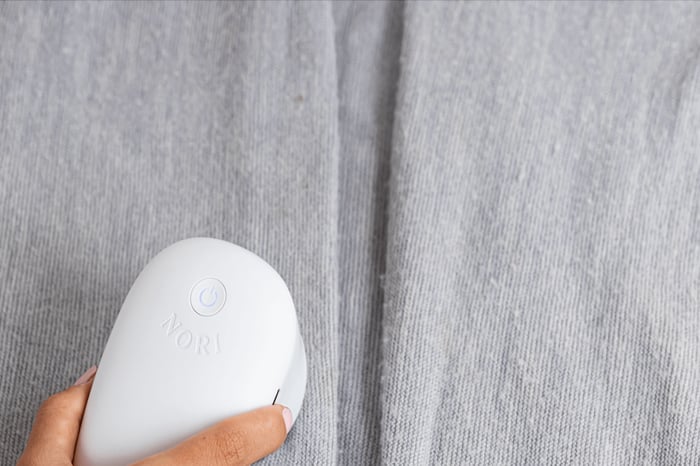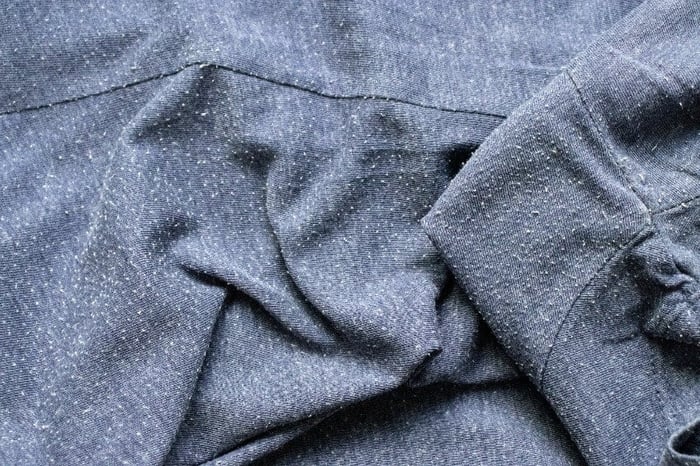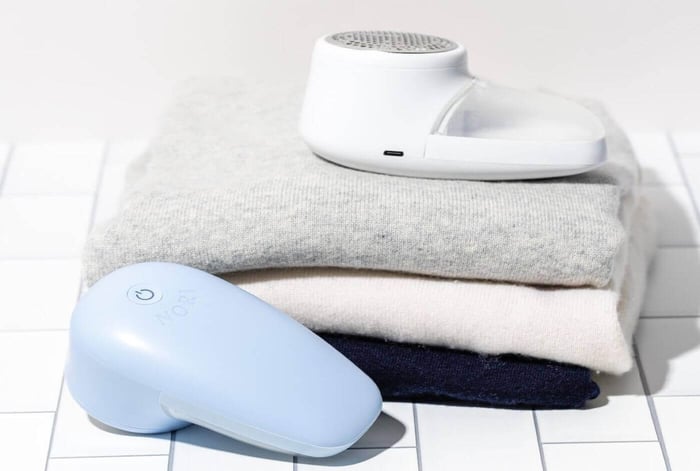 Are you tired of finding lint all over your house from your blanket? You’re not alone! Many people struggle with how to stop a blanket from shedding lint, and it can be a real nuisance. But don’t worry — there are some easy ways to stop a blanket from shedding lint once and for all. One effective approach is to minimize shedding by using specific washing and drying techniques.
Are you tired of finding lint all over your house from your blanket? You’re not alone! Many people struggle with how to stop a blanket from shedding lint, and it can be a real nuisance. But don’t worry — there are some easy ways to stop a blanket from shedding lint once and for all. One effective approach is to minimize shedding by using specific washing and drying techniques.
In this blog post, we’ll look at some simple methods, such as using the Nori Trim to remove lint from your blanket, to keep the fuzz off your floor without sacrificing the comfort of having a cozy blanket around. The Nori Trim is a fabric shaver that can easily remove the lint from your blankets. It's compatible with all fabrics so you don't have to worry no matter what material your blanket is made of. Get your very own Nori Trim today!
If you want to know more about how to easily stop a blanket from shedding lint, read on!
The Nori Trim
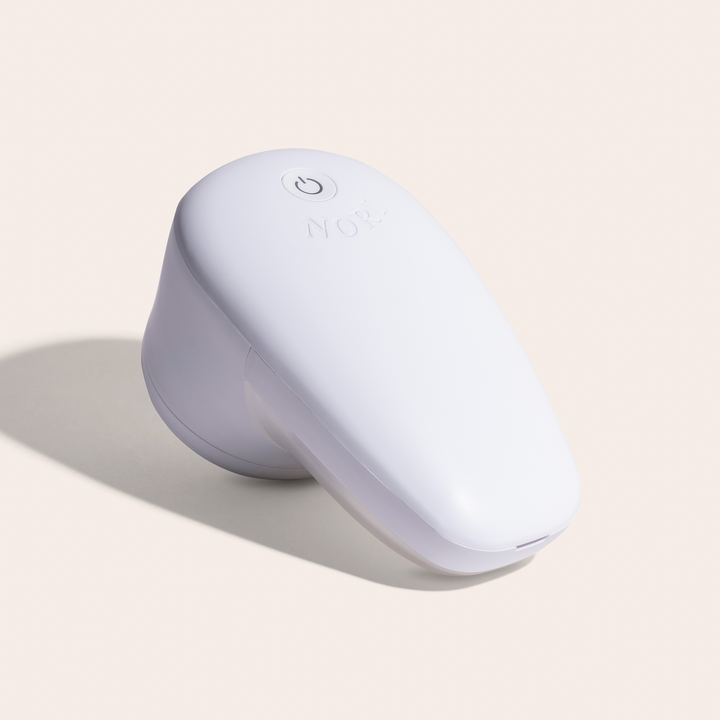
$59.00
A high performance fabric shaver designed to remove pills and lint from clothing and furniture. … read more
Use discount code “SHOP10” at checkout to save 10% on The Nori Trim!
Wash Your Faux Fur Blanket Properly
Washing your blanket properly is essential for preventing lint from shedding. For a faux fur blanket, washing it in cold water and using fabric conditioner can help reduce shedding and maintain its quality. It’s important to use cold water and a gentle detergent when washing your blanket, as hot water can cause the fibers in the fabric to break down more quickly. For a fuzzy blanket, washing it in cold water on the gentle cycle and adding fabric softener can help stop shedding and strengthen the fibers. Additionally, using a mild detergent will help keep the colors of your blanket vibrant and prevent fading over time.
When it comes to drying your blanket, air drying is always best. The heat from dryers can damage fabrics and lead to premature wear and tear on blankets. If you do need to use a dryer, make sure you set it on low heat or no heat at all – this will help preserve the quality of your blanket for longer periods of time.
If pilling has already occurred on your blanket, don’t worry. You can easily remove them with a fabric shaver or lint roller. Fabric shavers are specially designed tools that gently shave away pills without damaging the material underneath – just be sure not to press too hard while shaving so you don’t accidentally snag any threads. Lint rollers are also great for removing pills; simply roll it over affected areas until all visible pills have been removed.
Vacuuming is another effective way of removing lint from blankets before they start pilling up again - but be careful not to vacuum too often as this could damage delicate fabrics like cashmere or wool blends. Vacuum slowly in one direction only and never backtrack as this could cause further damage due to friction between the bristles and fabric fibers.
By washing your blanket properly, you can help reduce lint shedding and ensure that it lasts longer. Air drying your blanket is another important step to prevent lint from becoming a problem.
Key Takeaway: To prevent lint shedding and pilling on your blanket, use cold water and a gentle detergent when washing, air dry whenever possible, remove pills with a fabric shaver or lint roller, and vacuum slowly in one direction only.
Air Drying Your Blanket
Air drying your blanket is a great way to prevent lint from shedding. The heat from the dryer can damage the fabric of your blanket, causing it to break down and shed more easily. In addition, static electricity can cause fibers in the fabric to cling together and form pills on your blanket. Air drying helps reduce both of these problems by not exposing your blanket to high temperatures or static electricity.
When air drying your blanket, you should hang it up outside or inside away from direct sunlight and heat sources like radiators or fireplaces. You should also avoid hanging it near any fans that could blow dust onto the surface of the fabric. If possible, use a clothesline instead of hangers so that all sides get exposed evenly to air circulation while drying. Additionally, you may want to turn over the blanket every few hours during its time outdoors for even exposure on both sides of the material.
If you don't have access to an outdoor space for air-drying, try using an indoor rack with plenty of room between each item being dried so that there is adequate airflow around them all as they dry out slowly over time indoors without creating too much humidity in one area which could lead to mold growth if left unchecked for too long. Lastly, when taking blankets off their racks after they are finished air-drying make sure not to shake them vigorously as this will only add more lint into circulation.
Using a gentle detergent specifically designed for washing delicate fabrics is also recommended when cleaning blankets prior to air-drying them. This will help keep dirt particles at bay and reduce any potential pilling caused by abrasion against other items in a wash cycle such as jeans or towels. Furthermore, be sure not to overload machines with too many items when laundering blankets as this can cause excess friction between materials leading again to increased levels of pilling on fabrics due to their weakened state after being washed incorrectly.
Air drying your blanket is an easy and effective way to prevent lint from shedding. To further reduce lint, using a fabric shaver can help remove any existing pilling on the blanket.
Key Takeaway:To prevent lint shedding from blankets, air dry them away from direct sunlight and heat sources, use a clothesline or indoor rack with adequate airflow, and wash using a gentle detergent specifically designed for delicate fabrics.
Use a Fabric Shaver
Using a fabric shaver is an effective way to remove pilling from your clothes. Pilling occurs when tiny fibers on the surface of fabrics become tangled and form small balls or pills, which can make clothing look old and worn out. A fabric shaver is a tool that uses blades to quickly and easily shave off these pills without damaging the material underneath.
When using a fabric shaver, it's important to take care not to press too hard against the garment as this could damage the material or cause further pilling. Start by turning on the device and gently running it over any areas with visible pilling in short strokes until all of the pills have been removed. Be sure to keep moving so you don't accidentally create more pills. After you've finished shaving, turn off the device and brush away any remaining fuzz from your garment before putting it back into rotation in your wardrobe.
To prevent future shedding, wash blankets according to their instructions—usually cold water on a gentle cycle with mild detergent—and avoid using bleach or harsh chemicals when possible as these can weaken fibers over time leading them to be more prone to shedding. Air drying is also recommended since high heat from dryers can break down fibers faster than air drying does. Additionally, regularly vacuuming up loose lint will help reduce excess shedding that accumulates over time while keeping your blanket looking fresh for longer periods of time between washes. For extra protection against shedding use a lint roller after each wash session for added protection against pesky little hairs sticking around.
Using a fabric shaver is an effective way to remove lint and pilling from your clothes. For those hard-to-reach areas, a lint roller can help pick up any remaining debris.
The Nori Trim stands out as the top fabric shaver, offering unparalleled efficiency and ease of use. This innovative tool is perfect for keeping your clothes looking fresh and new by effectively removing pilling and lint. Pilling, which occurs when tiny fibers on the surface of fabrics become tangled and form small balls or pills, can make clothing appear old and worn out. The Nori Trim uses precision blades to quickly and easily shave off these pills without damaging the material underneath, restoring your garments to their original smoothness.
Key Takeaway: A fabric shaver is an effective way to remove pilling from clothes. To prevent shedding, wash blankets in cold water with mild detergent and air dry them, regularly vacuum up lint and use a lint roller after each wash session.
Use A Lint Roller
Using a lint roller is an easy and effective way to remove any existing pilling from your blanket. It's also a great tool for removing pet hair, dust, and other debris that can accumulate on the surface of your blanket. To use a lint roller, simply roll it over the surface of your blanket in one direction until all visible lint has been removed. For best results, make sure you start at one end of the blanket and work your way across to the other side in straight lines.
When using a lint roller on delicate fabrics such as wool or cashmere blankets, be sure to press lightly so as not to damage the fabric fibers. You should also avoid rolling back and forth over areas multiple times since this could cause more pilling instead of lessening it. Depending on how often you use your blanket, we recommend running a lint roller over it every few weeks or so just to keep it looking its best.
If you have pets that frequently sleep with you under your blankets then using a lint roller after each time they get off may be necessary if there's too much pet hair accumulating on them quickly. When storing away your lint roller between uses make sure you keep it out of direct sunlight which can cause its adhesive strip to lose effectiveness quicker than normal.
Finally, when purchasing new blankets try opting for ones made from synthetic materials like polyester or nylon which are less prone to shedding compared with natural fibers like cotton or wool. This will help reduce future pilling issues before they even begin.
Using a lint roller is an effective way to quickly remove lint and pilling from your blanket. For deeper cleaning, try vacuuming the blanket with an upholstery attachment for best results.
Key Takeaway:A lint roller is an effective tool for removing pilling from blankets and other fabrics. To reduce future pilling, opt for synthetic materials like polyester or nylon instead of natural fibers. Additionally, use the lint roller every few weeks and store it away from direct sunlight to maintain its effectiveness.
Vacuum Your Blanket
Vacuuming your blanket is an effective way to remove lint, pet hair, and other debris from the fabric fibers. It's important to use a vacuum with an upholstery attachment for this task. This will help ensure that you don't damage the fabric while cleaning it.
Start by laying out your blanket on a flat surface such as a bed or table. Make sure there are no wrinkles in the fabric before beginning to vacuum it. Then attach the upholstery attachment to your vacuum cleaner and turn it on to low power setting so that you don't accidentally rip any threads or damage delicate fabrics like cashmere or silk blankets.
Gently move the nozzle of the vacuum over each section of your blanket until all areas have been covered completely. Pay special attention to seams and edges where dirt can accumulate more easily than in other parts of the fabric due to their location near furniture legs, shoes, etcetera. Move slowly across these sections and make sure not to miss any spots.
Once you have finished vacuuming one side of your blanket, flip it over and repeat the same method on its reverse side for the best results. Start at the top left corner and work down towards the bottom right corner until the entire area has been covered evenly with suction from the vacuum cleaner nozzle without missing any spots. Finally, when done vacuuming both sides of the blanket, shake off any excess lint or pet hair into a trash bin (or outside) before folding it neatly back onto a bed or table for storage purposes later if desired.
Regularly vacuuming your blanket will help to remove lint and prevent it from shedding. For further prevention, try the next step of using a fabric shaver or a lint roller.
Key Takeaway:Vacuuming your blanket with an upholstery attachment is the best way to remove lint, pet hair and other debris from fabric fibers. Make sure to: - Lay out the blanket on a flat surface without wrinkles - Attach the upholstery attachment and use low power setting - Move slowly across seams and edges for best results - Vacuum both sides of the blanket evenly - Shake off any excess lint before folding neatly
Prevent Future Shedding
Getting back to How to Stop a Blanket from Shedding Lint - It’s no secret that blankets can start to shed over time, leaving your clothes and furniture covered in fuzz. To keep your blanket looking its best and prevent future shedding, there are a few simple steps you can take. Using the dryer with tennis balls can help loosen excess fibers, and shaking the blanket can remove loose fur.
First, avoid over-washing your blanket. Washing too often or using harsh detergents can damage the fibers of the fabric and cause it to break down more quickly. Stick to washing once every two months or so with a gentle detergent specifically designed for delicate fabrics. For fuzzy blankets, routine maintenance like shaking and dry cleaning can help minimize shedding and lint.
Second, use fabric softener when laundering your blanket. Fabric softeners help reduce static electricity which causes lint build-up on clothing and blankets alike; this will also make sure that any loose fibers don’t stick around after each wash cycle is complete.
Third, store blankets in breathable containers or bags when not in use - this helps reduce moisture buildup which could lead to mold growth if left unchecked for too long. Additionally, storing them away from direct sunlight will help preserve their color longer as well.
Finally, invest in a good quality lint roller or brush to remove any excess fuzz before putting away clean laundry items like sweaters and other knitwear garments made of wool or synthetic materials prone to pilling easily - this way they won’t be ruined by all those pesky little balls of fluff.
By following these tips, you can keep your favorite blanket looking great while preventing future shedding. Go ahead and enjoy snuggling up with it without worrying about getting covered head-to-toe in fuzz afterward.
Key Takeaway: By following a few simple steps, you can keep your blankets looking great and prevent future shedding: wash with gentle detergent every two months, use fabric softener when laundering, store in breathable containersbags away from direct sunlight, invest in a good quality lint roller or brush.
Conclusion
In conclusion, there are a few simple steps you can take to be on top of how to stop a blanket from shedding lint. Washing your blanket properly and air drying it is the first step. You can also use a fabric shaver or lint roller to remove any existing lint on the surface of your blanket. Vacuuming your blanket regularly will help keep it free of debris and prevent future shedding. By following these tips, you should be able to keep your blankets looking like new for years to come!
Do you want to stop your blanket from shedding lint? Do you have clothes that are pilling and need help removing it? Nori is here to provide a solution! With our easy-to-use guide, we will teach you the best methods for preventing pilling on new clothing items as well as how to remove existing pills. Don't wait any longer - take control of your wardrobe today with the Nori Press!
